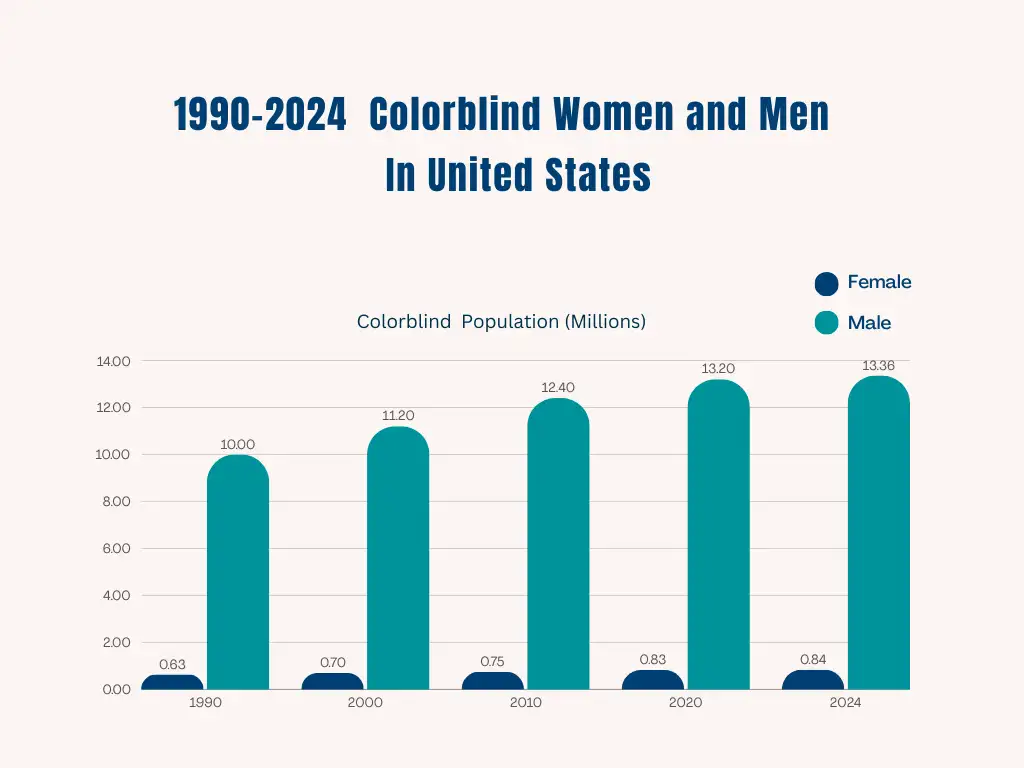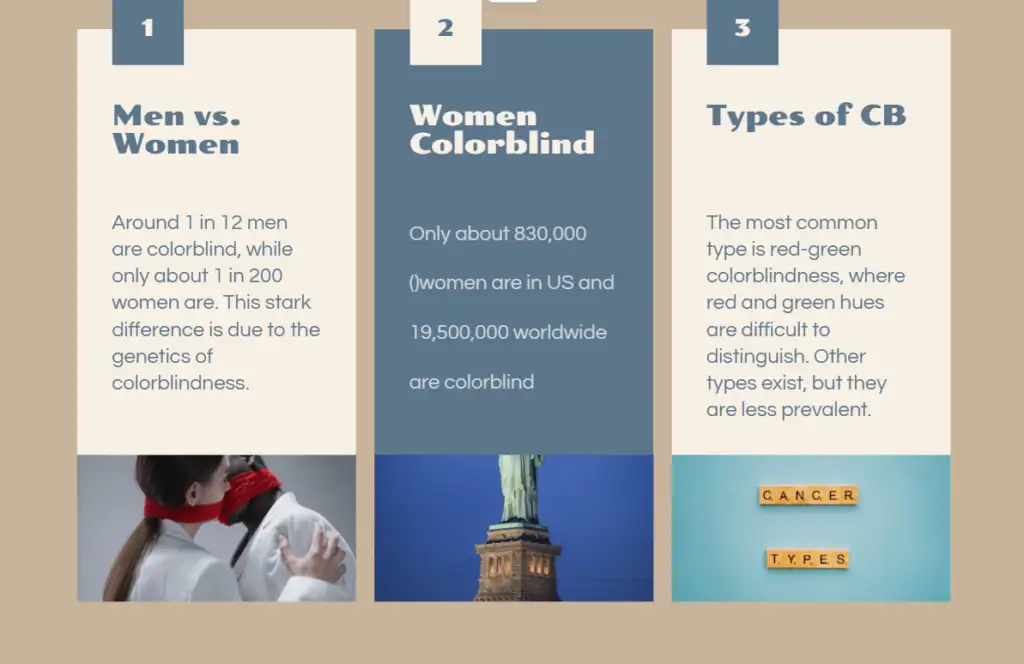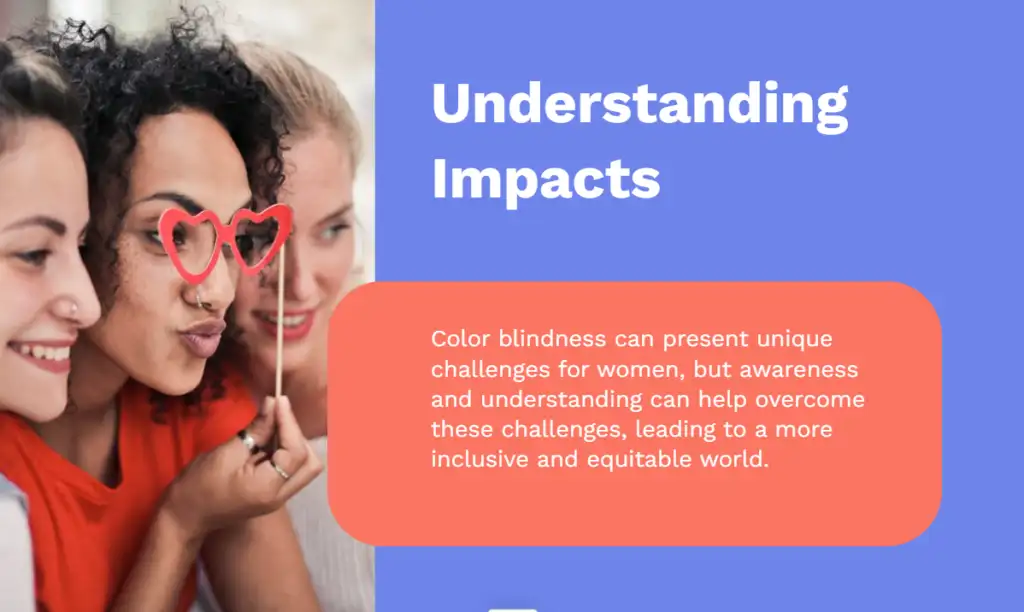Can Girls Be Color Blind? Understanding the Genetics and Prevalence
Color blindness is often linked to men, but it is a misconception that women cannot be affected. Yes, girls can be color blind, although it is much rarer compared to boys. This condition typically stems from genetic factors and occurs when the eye’s cones lack certain pigments needed to perceive color.
Understanding how color vision works helps clarify why this condition affects different genders in distinct ways. While genetic inheritance plays a significant role, advancements in medical knowledge are improving diagnosis and increasing awareness about color accessibility for everyone. This information is vital for parents, teachers, and anyone involved in the education of children who might experience color blindness.
Recognizing the nuances of color blindness not only fosters understanding but also aids in providing appropriate support. As knowledge continues to grow, so does the importance of acknowledging that girls and women can indeed face challenges with color perception.
Key Takeaways
- Color blindness is less common in women than in men.
- Genetic factors play a significant role in color vision deficiencies.
- Raising awareness helps improve support for those affected by color blindness.
Understanding Color Blindness
Color blindness is a condition where people have difficulty distinguishing certain colors. This issue can be the result of genetic factors and varies in its frequency and types across different populations. Understanding its characteristics is important for awareness, especially regarding women.
Defining Color Blindness

Color blindness, or color vision deficiency, refers to the inability to see colors correctly. This condition affects how individuals perceive colors, leading to confusion between shades like red and green. The most common type is red-green color blindness, which primarily affects males. It results from mutations on the X chromosome. Other forms include blue-yellow color blindness and achromatopsia, where individuals cannot see any colors at all.
Genetic Basis of Color Blindness

The genetics behind color blindness involve sex chromosomes. Males have one X and one Y chromosome, while females have two X chromosomes. Since the gene responsible for most color blindness types is on the X chromosome, men are more likely to be affected. If a woman inherits one affected X chromosome, she may be a carrier, but having the second normal X chromosome often prevents her from being color blind. However, approximately 0.5% of women are affected. Mutations in the genes on the X chromosome impact color perception, leading to the condition.
Frequency and Types of Color Blindness in Women
Color blindness is much rarer in women compared to men. About 1 in 200 women experiences this condition, primarily affecting red-green perception. Blue-yellow color vision deficiency is less common but can also occur in women. While most color blindness research focuses on men, studies are beginning to reveal the experiences of women with color vision deficiencies. Understanding these types helps highlight the need for awareness and support for color blind women, who may face unique challenges in their daily lives.
Color Blindness Genetics in Women
Color blindness is primarily linked to genetics and is often inherited through the X chromosome. This means that biological females have a different risk compared to biological males. Understanding how color blindness is passed down can clarify why it is less common in women.
Sex-Linked Inheritance

Color blindness is usually a sex-linked genetic condition, meaning it is connected to the X chromosome. Males have one X chromosome and one Y chromosome (XY), while females have two X chromosomes (XX). If a male inherits an X chromosome that carries the color blindness gene, he will be color blind. Since females have two X chromosomes, one normal X can compensate for an affected X. As a result, color blindness is rare in biological females, affecting about 1 in 200 compared to 1 in 12 males.
Carriers and Expression of Color Blindness
Biological females can be carriers of the color blindness gene without showing any symptoms. A carrier has one normal X chromosome and one affected X chromosome. If this carrier has children, there is a 50% chance her son will be color blind. Daughters have a 50% chance of being carriers as well. Color blind relatives can also affect genetic risk. For example, if a woman has a color blind father or brothers, her chances of being a carrier increase. Consequently, while color blind women are rare, their genetic makeup plays a significant role in the inheritance pattern of color blindness in families.
Diagnosis and Challenges
Color blindness, or color vision deficiency, often goes undiagnosed in women due to its lower prevalence. Accurate detection is crucial for understanding the daily challenges faced by those with this condition.
Detecting Color Vision Deficiency
Color vision deficiency can be detected through specific tests conducted by an ophthalmologist. The Ishihara test is one of the most common methods. It involves identifying numbers or shapes within a series of colored dots.
Another method is the Anomaloscope, which helps determine the type and severity of color blindness. Digital tests and screening apps also offer convenient ways to assess color vision.
Women may experience different challenges due to this condition, often linked to genetics. Since color vision deficiency is often inherited through the X chromosome, it is less common for women. This factor can complicate diagnosis since some may not realize they have the condition.
Living with Color Blindness

Living with color blindness involves navigating several daily challenges. One challenge is color accessibility. In a world designed with color cues, it can be hard to identify fruits, clothing, or traffic signals accurately.
Using visual aids, like color identification apps, can help. These apps can provide instant feedback on colors, enhancing daily tasks.

Social situations might also present difficulties. For instance, individuals may struggle to discuss color preferences or match outfits with friends.
By understanding these challenges, society can work towards improving color accessibility for all. This can lead to more inclusive environments that accommodate those with color vision deficiencies.
Advancements in Color Accessibility
Recent improvements in color accessibility are making it easier for individuals with color vision deficiencies to engage with the world around them. These advancements include innovative technological aids and enhanced practices that promote better color understanding and usage.
Technological Aids for Color Vision
Various technological aids have emerged to assist those with color blindness. Specialized apps can now help identify colors and enhance visuals. For example, some apps use the smartphone camera to detect colors in real-time.
These tools can provide auditory descriptions of colors or indicate color names, making everyday tasks more manageable. Furthermore, color-blind glasses, like those from EnChroma, enhance color perception by filtering specific wavelengths of light. These glasses can help users experience a wider range of colors, improving their overall visual experience.
Improving Color Accessibility
Improving color accessibility is also about making environments and information more inclusive. This can involve using clear and distinct color palettes that are easily recognizable to those with color vision deficiencies.
For instance, designers might choose high-contrast combinations, such as pairing blue with bright yellow, to ensure visibility. Additionally, visual aids like labels with text descriptions can help convey important information without relying solely on color.
Furthermore, training programs for educators and employers about color vision can create more understanding and awareness. Simple adjustments in design and communication can make a significant difference for individuals with color blindness.
Frequently Asked Questions
This section addresses common questions about color blindness in females, focusing on inheritance, rarity, types, testing methods, and genetic factors. Understanding these aspects provides a clearer view of how color blindness affects girls.
How does inheritance affect the possibility of color blindness in females?
Color blindness typically follows an X-linked recessive pattern. Females have two X chromosomes, so they need to inherit the gene from both parents to be color blind. If a female has one normal X chromosome, she may not show color blindness but can be a carrier.
How rare is color blindness in women compared to men?
Color blindness is much less common in females than in males. The most prevalent form, red-green color blindness, affects approximately 1 in 200 females compared to 1 in 12 males globally. This rarity is due to the genetic factors involved in inheritance.
What types of color blindness can occur in females?
Females can experience various types of color blindness, including red-green, blue-yellow, and complete color blindness. Red-green color blindness is the most common, while blue-yellow is less frequent. Each type affects color perception differently.
How can a color blind test ascertain if a girl is color blind?
Color blindness tests, such as the Ishihara test, use colored plates with numbers or patterns embedded in them. A girl may be asked to identify these elements. If she struggles to see certain colors, it may indicate color blindness.
What is the likelihood of a girl being color blind when her mother is a carrier?
If a girl’s mother is a carrier of the color blindness gene, there is a 50% chance that she will inherit the gene and be a carrier herself. The likelihood of being color blind depends on whether she also inherits the affected X chromosome from her father.
What genetic factors contribute to color blindness in girls?
Color blindness is mainly linked to genes on the X chromosome. If a girl inherits an affected X chromosome from either parent, she could either be a carrier or affected, depending on the second X chromosome. The inheritance pattern plays a crucial role in determining her color vision.








